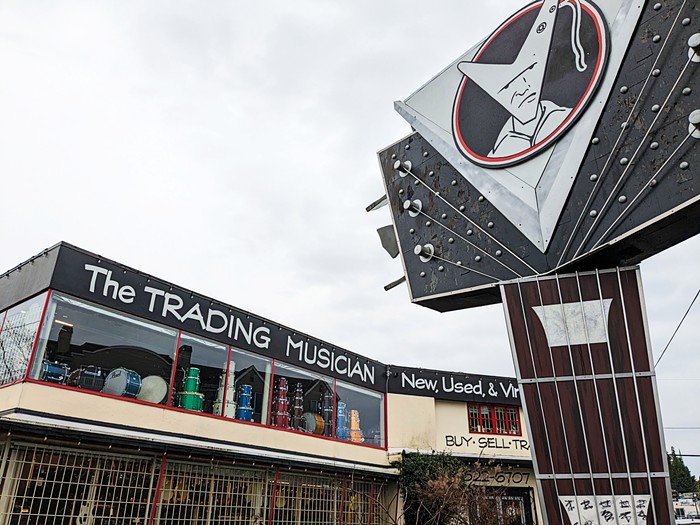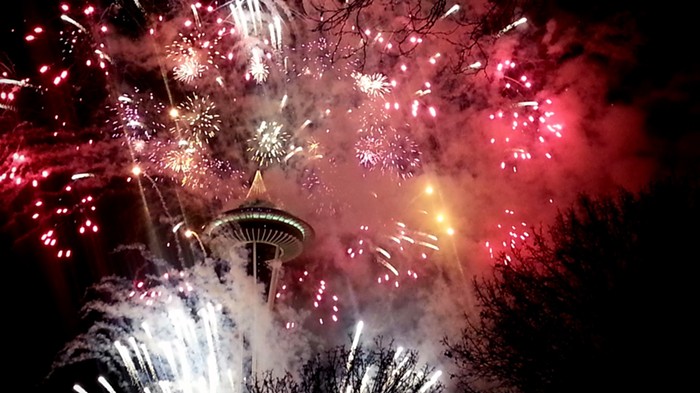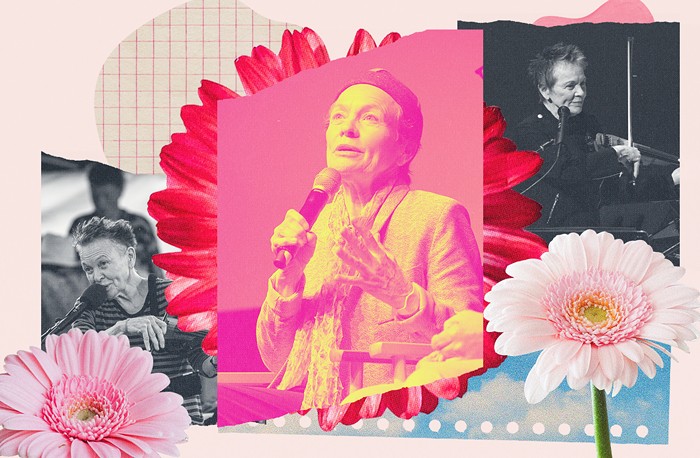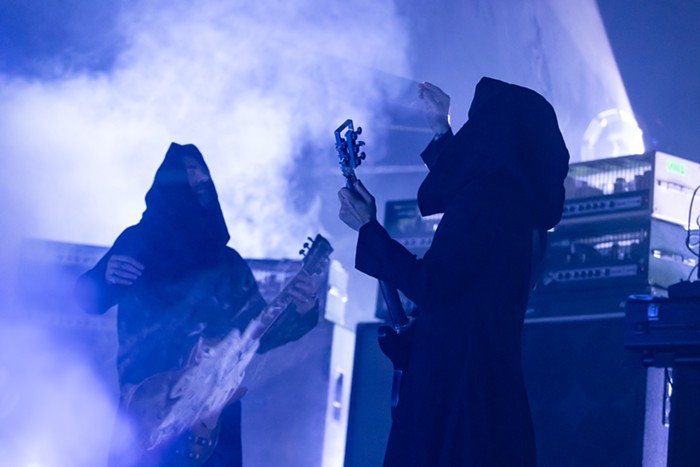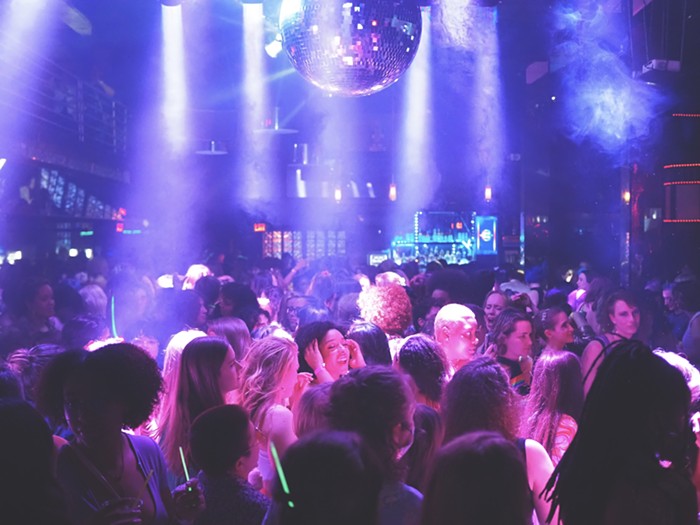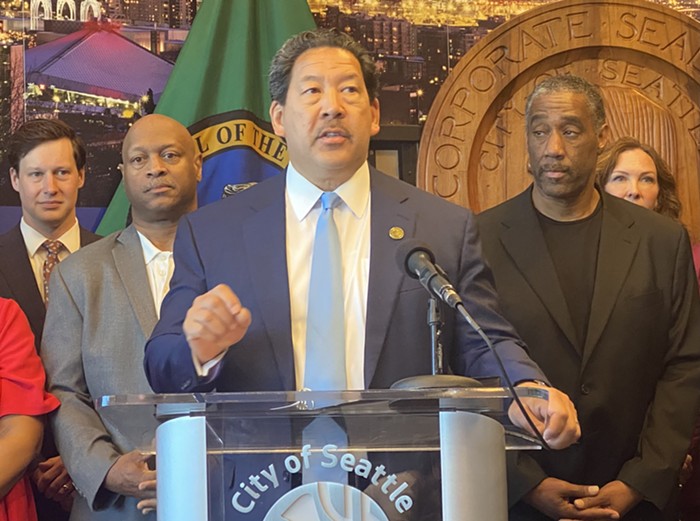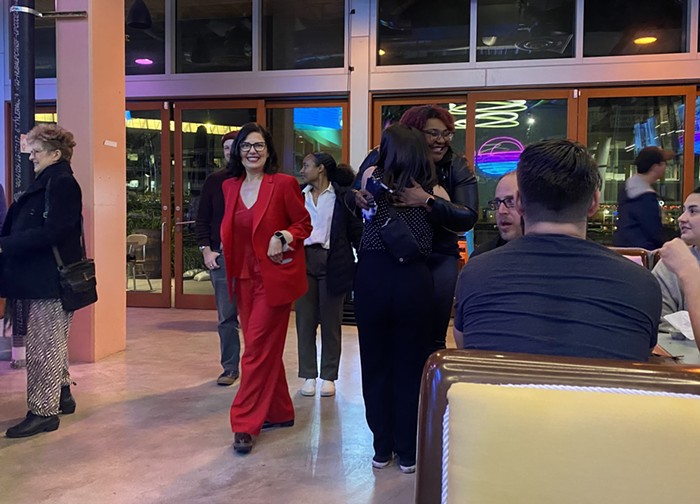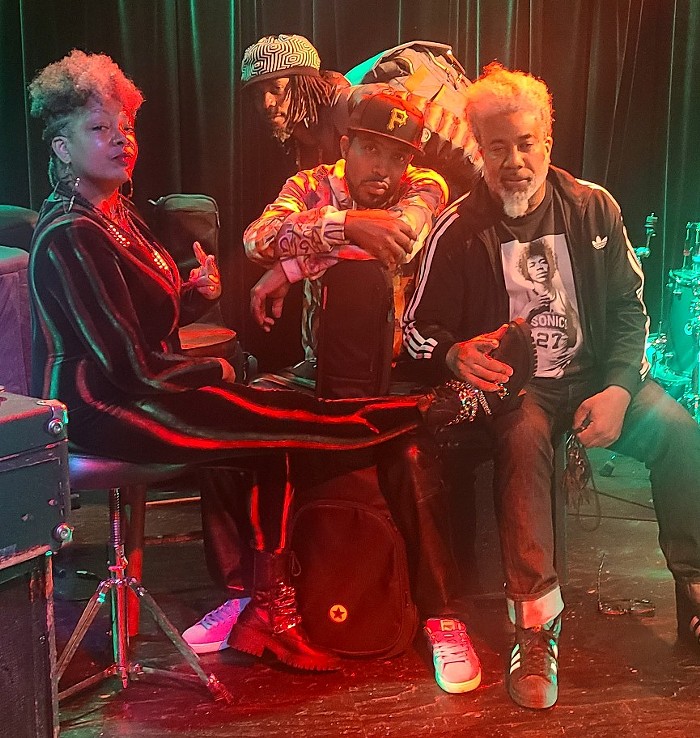Not long ago, in the dusty deserts of Central Oregon, Bhagwan Shree Rajneesh—an Indian philosophy professor turned entrepreneurial spiritual leader—bought all 64,000 acres of the Big Muddy Ranch. From 1981 to 1985, Rajneesh turned it into his vision of a utopia, calling it Rajneeshpuram.
Rajneesh called his followers the sannyasins—and at their peak, there were thousands of them, many of them young professionals. These devotees dressed entirely in oranges and reds while they helped turn the land into a functioning community complete with a mall and a transit system. While Rajneesh promised his followers spiritual enlightenment, some of his motivations and the corruption of Rajneeshpuram’s leaders contrasted sharply with the group’s supposed ideals. (Rajneesh was known to drive around in one of his 93 Rolls-Royces, purchased for him by wealthy sannyasins.) Leaders attempted to gain city status for the commune, and came close to success—for a while, Rajneeshpuram even had its own zip code.
Land-use disputes with nearby ranchers and the local government eventually led to Rajneeshpuram’s downfall—but only after sannyasin leaders tapped wires, attempted murder, poisoned more than 700 people at salad bars in the Dalles in an attempt to affect voter turnout, and created the controversial “Share-a-Home” program that bussed in thousands of homeless Americans, another attempt to impact voting numbers. Less than five years after it began, Rajneeshpuram was abandoned, and its followers had no choice but to disperse.
Rajneeshpuram’s swift rise and hard fall fascinated musician Danny Seim (Menomena), who relocated to the Portland neighborhood in Louisville, Kentucky, after living in Portland, Oregon, for 25 years. Our Puram is Seim’s second album with Pfarmers, his experimental indie project with Bryan Devendorf of the National and horn player Dave Nelson, who’s worked with Sufjan Stevens, David Byrne, and St. Vincent. With Our Puram, Seim revisits the commune.
He first encountered Rajneeshpuram as a child living in Hawaii: “My family was fairly religious,” he says, “I guess I should say extremely religious—and they were showing this documentary in the church in the rural town I was growing up in, in Hawaii of all places, and it was focused on the new age movement, with all these crazy people dancing. It was just horrifying to me as a kid, to see people under the power of Satan. And it turns out it was happening in Oregon.”
Living in Portland reignited Seim’s interest in Rajneeshpuram, though in adulthood, his childhood horror morphed into sympathy for Rajneesh’s followers. Seim’s fascination is understandable: It’s bizarre to consider such a giant divergence from mainstream society functioning, at least for a while, a mere three-hour drive away from Portland. It’s also remarkable that the sannyasins’ fervent passion and desire for connectedness, or enlightenment, or whatever brought thousands of them into the desert, was forcibly extinguished when the leaders were tried for their crimes and the commune was disbanded. The land was sold soon after, and now exists as a Christian youth camp and an airport.
Seim notes that, while he didn’t intentionally write Our Puram as a double-exposed narrative of Rajneeshpuram’s golden age and subsequent decay alongside Seim’s time in Portland before he was priced out, “There are some weird parallels of exodus.
“When I was shoving off I was thinking of these people,” Seim continues, “not just the homeless people getting bussed to god knows where, but the sannyasins—it’s just interesting, like, where are they now? Where did they go? Where was home for them? You’ve got to get attached to a place after four years, literally building your own houses and everything. I kind of started thinking about when I first got to Portland, how the scene was then, and how friends tell me it is now.”
Our Puram’s eight songs explore the birth and death of Rajneeshpuram through the eyes of a true believer, as Seim tries to channel the motivations of a sannyasin. Seim attempts to extricate goodness from Rajneesh’s teachings, and even quotes him on opening track “97741” (Rajneeshpuram’s former zip code): “Die in each moment so that you can be new each moment.” He coos this phrase calmly against Devendorf’s asymmetrical but hypnotic percussion and Nelson’s jazzy flurries of horns. It’s dynamic and vibrant, pulsating with oddly intoxicating energy.
Some songs feel limited by the story Seim’s telling, but tracks like “You’re with Us” capture the narrative in the music itself. Frenetic energy from Devendorf’s clangor of drums intimidate as Seim sings, “You’re with us, or you are dead to us/There is no middle ground.” Nelson’s horns press into the melody with foreboding intention, completing a nightmarish soundscape that’s at once exciting and terrifying.
Our Puram’s standout is its closer, the title track. It’s a tragic finale, where Seim sings, “Slowly, surely we’ll forget about Rolls-Royce fleets and brainwashed demigods... Slowly, surely we’ll forget about our Puram.” While Seim acknowledges the avarice that poisoned the community of Rajneeshpuram, this heartbreaking conclusion serves as a sort of memorial to whatever passion for goodness moved thousands of sannyasins. ![]()


